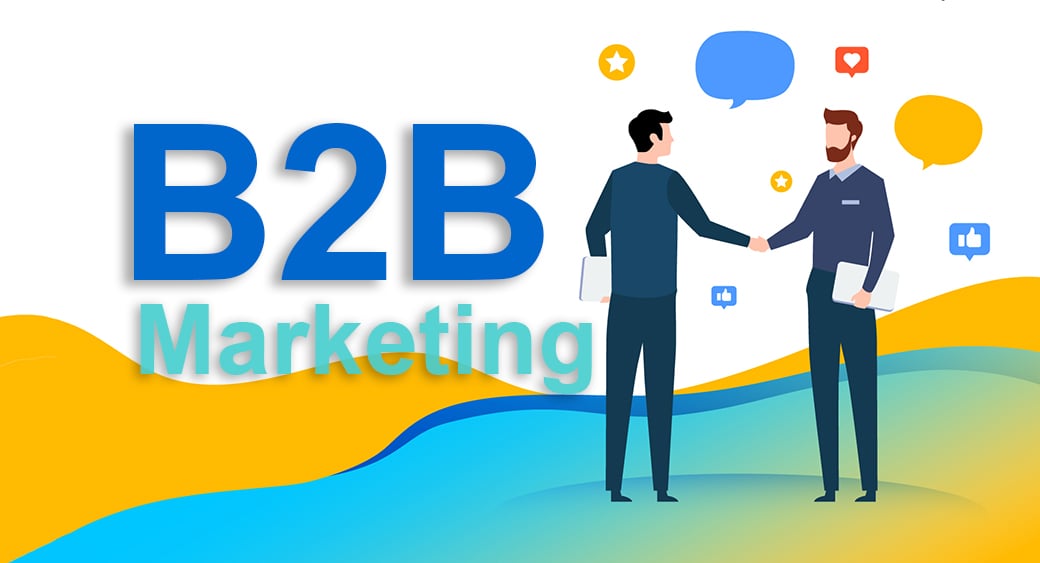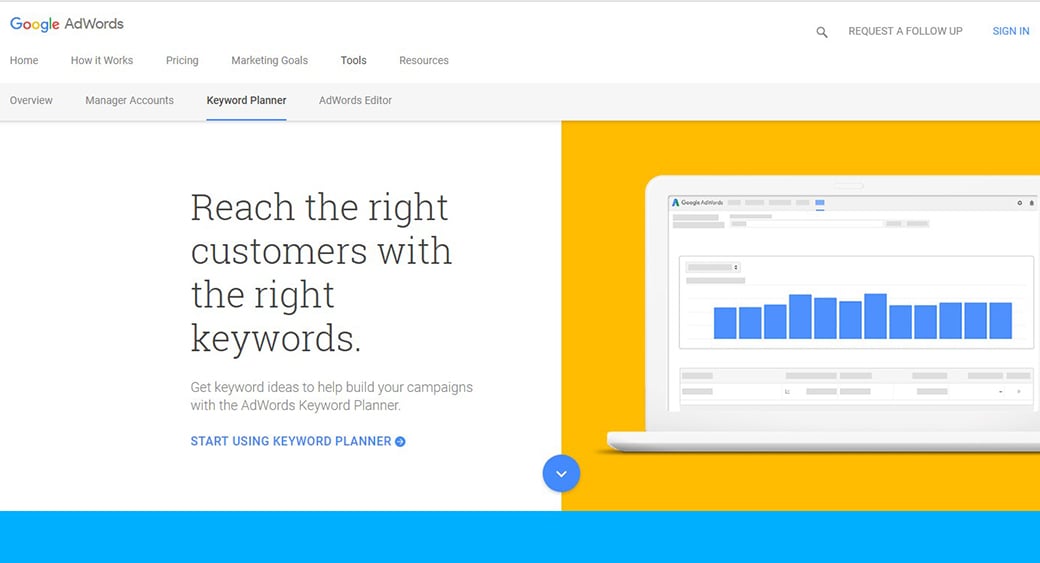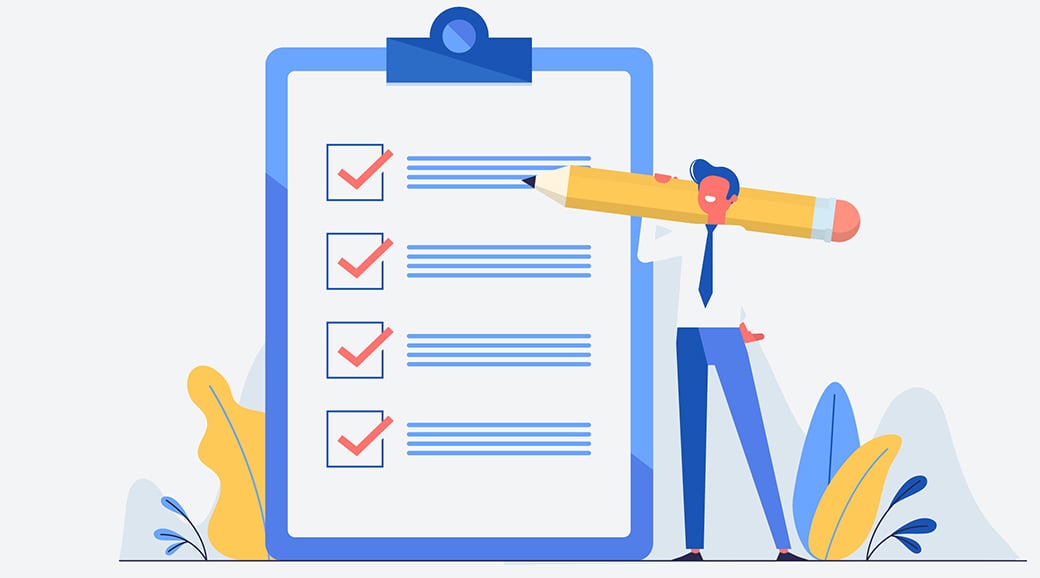Business 2 Business Marketing – Definition and Successful Strategies
Do you have what it takes to become a successful business 2 business marketing (B2B) professional? We think you do. And it’s never been a better time to learn and implement digital B2B marketing strategies. By 2020, B2B eCommerce sales are expected to outgrow B2C eCommerce sales.

Developing digital marketing strategies for business 2 business marketing may seem overwhelming, so it’s best to start with the basics and build from there.
After all, it’s crucial to understand why you’re using a specific strategy (like content marketing) before committing your resources to it.
So in this blog, we’ll cover the main basics and take a deep dive into some successful strategies. We’ll discuss:
- What is a pain point?
- How do you get leads and sell to other businesses?
- How do you get your message out to interested businesses?
- And finally, how do we retain customers and create long-lasting business relationships?
What is Business 2 Business Marketing? – Definition
First, what exactly is B2B?
B2B (or business to business) is the process of one business selling to another.
For example, a car is not assembled with parts that are found on the sidewalk outside of the factory but rather with tires, glass, steel, wires, and other materials purchased from a supplier. This is an example of a B2B transaction.
Only once the car is built and is ready to market to consumers will businesses switch to a business-to-consumer (B2C) strategy.
So, business 2 business marketing then is the process of actively connecting businesses that want to sell a product or service with businesses that would like to buy them. It’s about finding and attracting high-quality business leads.
And that’s what makes business to business development strategies considerably more complicated than B2C. How do you get your message out to businesses that are not, necessarily speaking, explicitly asking for your goods, such as cybersecurity for SMBs?
And since you’re selling to an entire company with a sophisticated decision-making team, not a single consumer — how do you get buy-in from everyone? These are the main challenges that every B2B marketer faces.
Thankfully, there are a few ways to address this problem.
Essential Business 2 Business Marketing Strategies

1. Know Your Audience
Fundamental to any business 2 business marketing strategy is research: firms that conduct research are far more profitable than firms that do not.
Simply put: you must understand the needs of your target niche before you can successfully sell to them.
Marketplace Research Comes First
First, conduct marketplace research:
- How big is your market?
- What are the best ways businesses like yours cater to them?
- Who is your demographic within the market?
- Do a real deep dive, both on individual companies and the people working for them.
For companies that fit your ideal customer, ask:
- Is the company doing well?
- How many employees does it have?
- Who are the key decision makers, and what are their job titles?
From this research, you can start to identify your target’s pain points.
A pain point is a problem that your target business/persona is experiencing – that your service or product can solve.
Find out what is their biggest expenditure related to your business. Are they happy with their current service? What stops them from achieving their professional goals?
Second, Run a Competitor Analysis
Now that you identified your target buyer, it’s time to conduct competitor analysis or an assessment of the ‘rivals’ in your field.
This step will help to identify weaknesses as well as highlight where you’ve got a leg up on your competitors, so you can develop your business’s competitive advantage.
Key questions should be:
- Search ranking. Since digital is the name of the game, how does competition stack up in Google search? How many keywords are they ranking for? Are they ‘above the fold’ (showing up in the first few results) for these searches?
- How and why are they successful? What strategies are they employing to gain the edge? How often do they post to social media, create new blog content? How many backlinks do they have?
- Be frank. How does your business’s product or service stack up against theirs? How is it superior and inferior, and what can your business 2 business marketing strategies do to address the latter?
Third, Plan your Buyer Journey

Now that you understand your target demographic and your competitors, draw on your research to develop your buyer persona and map out their journey through the sales funnel framework.
The more detailed your buyer persona, the sharper and more effective your business 2 business marketing content creation, product development, and sales follow up will be.
Truly get into the mind of your ideal customer.
- Create a buyer journey. Buyer journeys will differ from business to business, and yours must be unique to your buyer. The B2B buying journey is especially tricky since there may be a wide variety of personas that you can target. Try to follow this pattern.
- First, your buyer persona experiences a spark of interest (they identify a need/problem).
- Next, they transition to information gathering (they seek information about the need/problem).
- Then, they start to seek options (to address the need).
- Finally, they select a vendor and make a purchase decision.
- List the buyer’s most relevant pain points within each stage of the journey.
- When the pain points are identified, determine how your business will provide solutions to each one.
2. Create a Content Strategy That Resonates & Converts

All business 2 business marketing experts know that good content drives every successful digital marketing effort.
And in order to take full advantage of this, your content strategy should be integrated with the sales funnel framework.
The best B2B marketing content targets your buyer persona and gets in their mind, answering their questions (and solving their problems).
So that means you should draw on your research and develop a messaging framework designed to speak to your audience at all stages of the funnel. (Your messaging framework should follow a branching structure from brand positioning at the top to brand stories at the bottom).
All content populating your framework should be clear and consistent, it should favor brevity, and be appropriate for each stage of the funnel.
Conduct SEO keyword research

In contrast to an outbound push strategy, a successful SEO strategy will help pull or attract prospects who are already researching problems you can solve.
This means generating organic leads and increasing visibility in search engines.
And it’s absolutely vital in today’s business 2 business marketing world.
Try these tactics:
- Conduct research by reading top ranking competitor content pieces. What topics are they covering? Who are they linking to? Who is linking to them? What is their tone, piece length, image use? What kinds of content are they sharing (whitepapers, webinars, videos?)
- Identify buyer keywords. Buyer keywords are important to find, as they are keywords and key-phrases that potential consumers type into Google when they want to make a purchase. You can start to collect these by typing keywords related to your business into Google, and collecting the results that populate the prediction field. These are queries that have been searched before and contain helpful buyer keywords.
- Assess which keywords your site already ranks for, and then identify new keywords your business can rank for.
Map out offers, blogs, and core pages
Most useful business 2 business marketing content requires careful mapping for success, guiding prospects from the top to the bottom of the funnel.
If you’ve defined your buyer’s journey, it’s now vital to map your content to it.
This is where content calendars are key.
They let you see (at a glance), where most of your performance is coming from, and where you have gaps.
Make sure you have:
- Top of funnel content (this content brings a large audience to your website; includes a range of tactics like social media, ads, videos, and webinars but in this piece, we will focus on blogs)
- Middle funnel content (gated content, which prospects will have to sign up for in order to access)
- Bottom funnel content (sales pages, service pages, and core pages, etc.)
1. Top of Funnel
Top funnel content is instrumental in generating demand, especially amongst prospects that have never heard of you, or never considered you as a potential solution to their problems.
Content that falls in this section of the funnel is purely educational and helps readers diagnose problems they might be having. You’re not trying to make a sale at this stage – you’re simply building awareness amongst your target buyers.
Let’s say you’re selling rubber to car manufacturers.
A top of funnel blog might be: “11 Surprising Facts about Nitrile Rubber,” where you can educate middle-managers at a manufacturing plant about one of the materials they use in their line.
2. Mid-funnel content
Middle funnel content is often referred to as “consideration” content.
Your prospects have educated themselves about problems they’re facing at work, and have begun to consider potential solutions.
And because content about potential solutions is inherently more valuable to your prospects, you can start asking your readers to make a small exchange for it; their email address for a free piece of content.
Offers, or gated content, are often critical here.
Examples of valuable middle funnel offers include whitepapers, webinars, product demos, and guides.
Prospects that give you their email address in exchange for content become Marketing Qualified Leads or MQLs.
You can enter them into your automation, and keep them engaged with your brand by emailing them more content that they might be interested in.
3. Bottom-funnel content
When it comes to the bottom of the funnel, landing pages are crucial.
These are pages that your prospects land on when they’re ready to take a sales call. They should succinctly explain the benefits of choosing your solution (and your company) over alternatives, offer plenty of social proof (testimonials, case studies, etc.), and make solid guarantees to combat last-minute-resistance.
But don’t forget about your core pages.
Your core pages are the areas of your website that describe your products or service, offer strong benefit statements, and encourage prospects to get in touch with your sales team. Like sales pages, you’ll want to funnel buy-ready prospects to your core pages (so they can get a more in-depth understanding of your service offerings).
Create high-value content

Ensure your content is high-value, catching and keeping the interest of prospects, and guiding them along the sales journey. In order to be considered high-quality, ensure your content meets the following criteria:
- Is your content easy to read, and appealing to ‘scanners,’ or readers who are just going to skim the headlines? Here’s a hint: most do.
- Is your content broken into headings and subheadings? Do not crowd too much content into each point; you do not want to overwhelm your reader. Aim for a few lines per headline. (Touching on the last point, readers are going to pay the closest attention to headings and subheadings, so use them as a road map to guide them along. Keep them interested, and do not deter them with over-complicated language.)
- Does the content guide readers through the sales funnel? Always think about the buyer journey: if a user is reading a top-funnel piece, gently guide them to middle-funnel content through strategic placement of links.
- Draw on your buyer persona, competitor analysis, and buyer journey research. Is the content highly relevant to your buyer persona? Does it address their pain points? Does it “speak their language”?
- Is the content optimized for conversions? Getting eyeballs on your content is great — but it’s also almost meaningless from a business perspective if they leave your website and never return. Make sure you have lead-gen forms and excellent offers to convert users into leads.
- Does your content satisfy the search intent? Put yourself in the shoes of the searcher, and make sure that your content actually answers the questions being asked. If it doesn’t, you’ll have a hard time ranking.
- Extra content hint: 70% of B2B buyers and researchers watch videos on their path to purchase. An explainer video on the landing page might be a good investment.
Ensure all content is SEO-optimized
Every piece of content must follow SEO best practices. Follow a procedure in which you or your writers check title tags (do they feature your primary keyword, are they under 55 characters?).
Do your headers and subheaders feature your keywords? Have you written meta descriptions? Does your content feature internal linking?
Be warned: black hat SEO practices, tactics such as keyword stuffing and link farms, violate Google’s terms of service, and can get your website (and all associated content) completely removed from Google results.
3. Identify Content Distribution & Buyer Engagement Channels
Now that you have created some fantastic content, here is a terrifying statistic for you. 50% of web content receives eight shares or less.
How do you bring your content to your audience?
A content distribution strategy helps business 2 business marketing experts bring content to online audiences. Here are some tips for successfully utilizing your distribution channels.
- Typically there are three types of channels to consider. Which channels do you own (your website, newsletter, blog, guest blogs, podcasts on your website, etc?) What channels do you share (social media?). The channels do you want to pay for (native advertising, paid search, influencer marketing?)
- In designing your content distribution strategy and choosing your blend of channels, refer to audience analytics and metrics to make each decision and give each piece of content the best chance possible for amplification. Who shares content similar to yours? Can you get them, or people like them, to do that for you? (Hint: LinkedIn groups are highly useful, but be careful to keep your posts high-quality and informational.)
- After conducting your research, create a content distribution calendar by channel. This will help your team stay organized, and simplify the analysis process (what posts did well, which ones didn’t; are Tuesday evening best for a certain kind of content, why or why not.)
4. Ensure Your Entire Website is Optimized for Performance

Improve your website’s visibility through SEO research and optimization.
You can have an incredibly well-optimized blog post, but it won’t matter if it’s posted on a poorly-optimized website.
Here are some SEO tactics to get started:
- Perform regular SEO audits. This process might sound intimidating, but SEO is a key aspect of any business 2 business marketing strategy. An audit essentially involves ‘crawling’ through the site like a search engine would, and optimizing the process as much as you can. You will be checking for indexing problems, checking for duplicate content, checking for high-quality metadata (in essence, data that tells search engines about your data, e.g. title tags and meta description fields). Your audit can use straightforward tools like Google Analytics. Though an audit can take weeks, some can be as short as a couple of hours.
- Analyze site speed and performance. Google has indicated that a slow site prevents search engines from crawling as many pages as they can, which can detract from your site’s ranking. Users will bounce if a website takes too long to load, and Google may even penalize your rankings.
- Review of CMS and plugins. What can help or hinder your site’s speed? Analyze your site’s CMS (content management system): a CMS with the clean code will help your site load fast. There are plugins available that can optimize your site’s metadata for SEO, automating the process of adding title-tags, meta keywords and meta descriptions for every page of the site.
Use design and UX best practices
Is your site:
- Easy to navigate? Be mindful of patterns. They can maximize accessibility and help meet user expectations, bringing them to the right content, and thereby optimizing the sales process. For example, a typical and effective pattern in e-commerce is the product grid.
- Is the site content easy to read? Review all content with a critical eye. Ensure it is clear, direct, and that every word needs to be there: superfluous content will bore the reader and risk raising the bounce rate.
- Is the site structure logical? Would you want to live in a house with doors that open out to nowhere and windows that look out on brick walls? Familiarize yourself with information architecture best practices so your website funnels users through the sales funnel as seamlessly as possible. A/B testing is highly recommended.
Make sure you’re capable of capturing leads
So you’ve built a well-optimized, easy-to-read site that ranks high in organic search: how do you convert visitors to warm leads?
Consider plugins for email capture. Convert visitors by making newsletter signup easy. For example, there are simple plugins available for capturing leads through signup, some activated by scrolling, some that appear on the landing page after visitors are allowed a tantalizing view of the copy.
Consider offering downloads. The prospect of gaining knowledge is always compelling: offer users a gated download of your company’s podcast or an instructional slideshow.
5. Consider Paid Media Advertising

Is your business leveraging PPC (pay-per-click) advertising?
With PPC advertising, you can pay a media network (like Google) each time a user clicks on one of your ads – so you can guarantee that you’re only paying when you engage with a user.
Review the following three PPC strategies to see which might be right for your business:
- Search Network Ads. Paid advertising may appear above organic results when a user searches your keywords. Some popular examples include Google Adwords and Bing.
- Paid Social Ads. With its massive user base and diverse age range, Facebook is currently a hugely lucrative platform for paid advertising. But with $6.84 billion in global mobile ad revenue in 2018, Instagram is catching up. A powerful paid social strategy will likely blend a number of networks. Paid social combines mediums like PPC, and PPM (Pay Per Thousand views), and can be a very flexible method of finding and engaging with your target audience.
- Display Network Ads. If you’re optimizing for visibility, or simply want to target people who have already engaged with your content in the past, advertising on Google’s Display Network (and similar platforms) can be a very cost-effective solution. With Display Network, you can get relatively cheap views with a CPM strategy (Cost Per Mille / Cost Per Thousand Views).
6. Use Analytics & Reporting to Check Behavioural Performance

- Experience your website like a visitor does, and use real-time data to see how your website is performing to improve the buyer journey and boost sales. Track and analyze KPIs (key performance indicators) and metrics. These are measurable values that tell you how your business is doing.
- Conversion tracking tells you what happens after a user clicks on your ad. If the user did something valuable like sign up for a newsletter, this interaction is considered a conversion. Set-up conversion tracking to diagnose and optimize your business’s web performance.
- Analyze your site’s traffic. How many visitors arrive at your landing page, and when? Where are they coming from (e.g. Paid ads? Organic visits from a Twitter post)? What is the bounce rate? Become familiar with the browsing habits of your prospects:
- What works to funnel them through the site’s buyer journey, what doesn’t work?
- What are their preferred times of day and week?
- Where are they coming from
- Where are they coming from – Facebook, a guest post?
Gathering and analyzing this browsing data can help your team optimize your business 2 business marketing strategies, from what advertising channels work to whether your information architecture design flows ideally.
Ads Testing
A/B testing of content and design. Do not rely on a good ‘gut feeling’ alone: test your landing page and other content to ensure that the design is optimal for your audience. Through A/B testing, you can split your audience to test with certainty how different iterations of design or copy work.
Be agile. Have your test results revealed that, for example, your Facebook ads are not working, or your landing page pop-ups are raising the bounce rate? Pivot and strategize as needed based on performance data.
7. Develop & Leverage Your Niche Authority
Heighten exposure for your brand, improve organic Google searches and add a sense of authority to your content by becoming a business 2 business marketing thought leader in your field.
Strategies like paid ads are only a piece of the sales puzzle: every day, prospects search topics related to your field. Provide them with useful content to build their trust in your brand, raising your conversion rate and broadening your sales reach.
Some ideas to start with include conducting webinars, creating unique video content, and training sessions relevant to your niche. Go to as many events as you can to generate contacts and network with other marketers in relevant associations in your city.
Finally, leverage your referrals: ensure the referrals you give and receive are high quality, and keep them organized — create a referral database as soon as you can.
Business 2 Business marketing – Summing It Up
Whether you are just starting out in your field or looking to update and optimize your company’s business strategy, there is a series of tried-and-true business 2 business marketing strategies you can follow.
Create a checklist to plan out the process outlined in this post:
- Identifying your target demographic,
- Creating a strong content strategy,
- Finding the right content distribution and buyer engagement channels
- Optimizing your website for UX,
- Developing a strong SEO strategy,
- Leveraging PPC advertising,
- Establishing niche authority and thought leadership
Keep careful track of metrics along the way, implement A/B testing wherever you can, and you’ll be able to substantially increase the likelihood of your success.




Leave a Reply